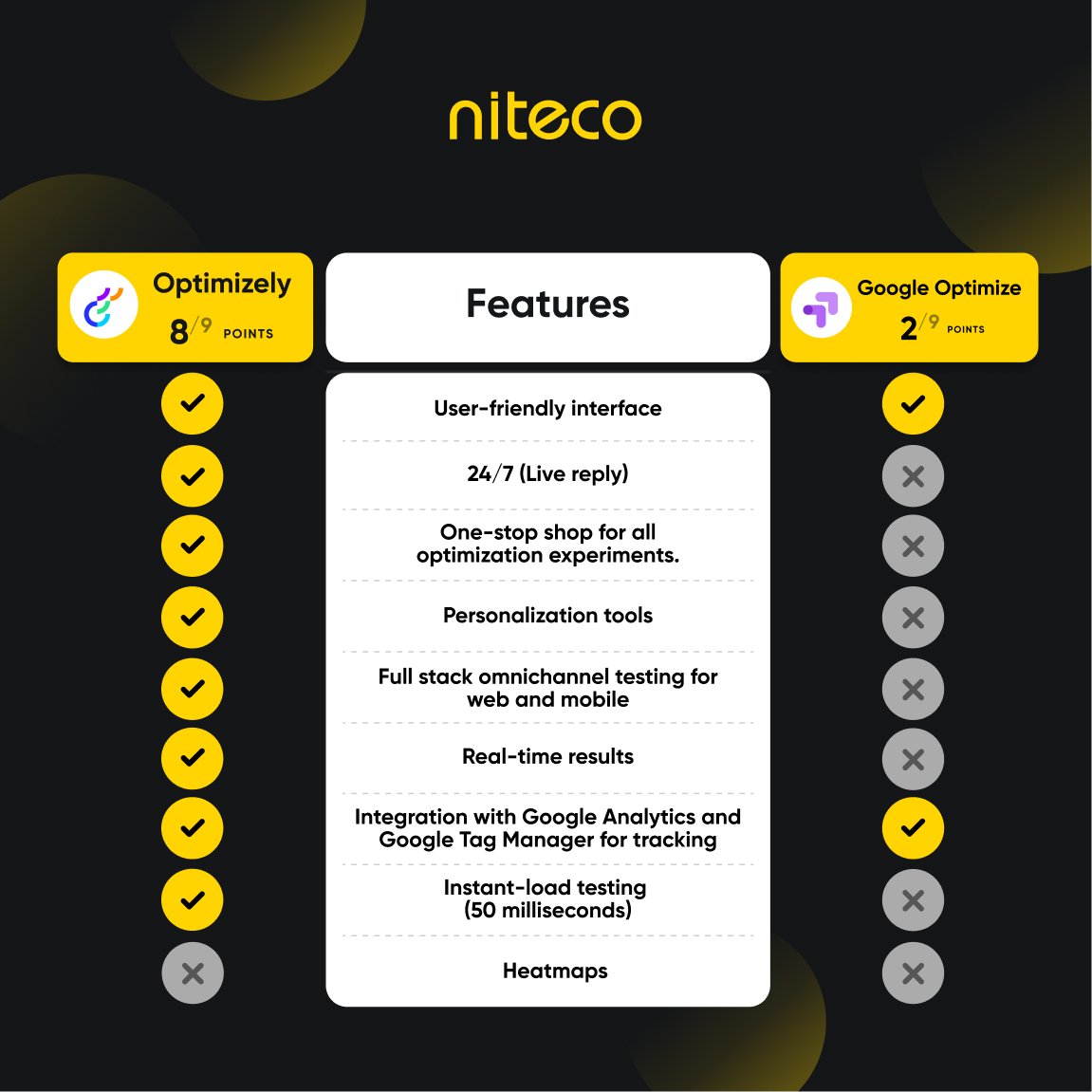A website isn’t the kind of project that’s finished once you’ve launched it. To make and keep a site successful, it’s important to keep working on it and optimize it from a technical as well as a content standpoint. However, it’s not always easy to know what you should or shouldn’t change. Is that call to action too small? Is that one image inviting enough? And what about the title of that one sub-section?
Table of Contents:
- What is A/B testing?
- Benefits of A/B testing
- How to do A/B testing: The process
- A/B Testing Best Practices
- What are A/B testing tools that experts recommend?
While there’s nothing stopping you from coming to conclusions and making those decisions on your own, the right data will make sure that you’re improving your site instead of making it worse. To get this data, you need to do A/B testing for your web pages, landing pages or any elements you want.
So, what is A/B testing?
What is A/B testing?
A/B testing, often referred to as split testing, involves displaying two different versions of an element (whether it's a button, an image, or an entire page) to distinct groups of target audience over a period and then determining which version prompted more users to take the desired action, such as converting.
This is a widely used marketing experiment to evaluate different strategies for direct response campaigns. Due to its effectiveness, this approach is increasingly being applied to assess various initiatives, including websites, applications, and landing pages.
Why is A/B testing important: Benefits of A/B testing
A/B testing is invaluable as it not only steers you toward enhancing user experience and boosting conversion rates but also plays a pivotal role in curbing bounce rates and mitigating risks within your marketing endeavors.
Besides, there are other key advantages of A/B testing include:
- Refining content quality
- Elevating conversion values
- Simplifying analytical processes
- Swiftly yielding results
- Ensuring the testability of virtually every aspect of your strategy
Before you dive into testing, ensure you understand how to track and calculate your conversion rate as a baseline. This will help you measure the impact of any A/B test accurately.
How to do A/B testing: The process
As already mentioned, A/B testing plays a pivotal role in assessing the effectiveness of digital marketing strategies. Given its significance, let's delve into the essential steps and strategies to ensure that your A/B tests yield valuable insights into your digital marketing efforts.
Step 1: Analyzing data and detecting an issue
In order to make the decision to do A/B Testing, you need to know that there’s an issue to begin with. To find out, you need to consistently be reviewing your website data, meaning event and goal performance (e.g. goal completions, goal conversion rate, event category, event actions, event labels, event value), page performance (sessions, pageview, bounce rate, exit rates, time on page, etc.) and/or traffic source performance (direct, organic search, paid search, social, referral, etc.). Doing that, you can find out which pages are not performing well and where conversions could be improved.
Step 2: Coming up with a testing idea and action plans
The testing idea is the new version of content or design that you thing may perform better than the current one. As a rule, you should create a hypothesis for your A/B test. This is an idea about what you need to test and why, and what improvements you’ll see after you make any changes. If you base your test on this hypothesis, you can decide on what your test will entail and what success or failure would look like. This step is where you make sure that your test is sound and based on data, not just on guesswork.
To form a hypothesis, use this template based on optimization specialist Craig Sullivan’s work:
Because we observed [A] (and/or feedback [B]), we believe that changing [C] for visitors [D] will make [E] happen. We’ll know this when we see [F] and obtain [G].
After coming up with a test idea, you need to build an action plan to make sure all testing ideas can be created and delivered. You may need developer or designer support for this. The action plan should cover three steps:
- Creating the design, content, or new algorithm for the testing version (variants);
- Implementation (design, content, or development efforts, including testing configuration);
- Monitoring, reporting, and decision-making.
Step 3: Implementing the campaign
After the design, content, and development work for the new version (variant) is done, you can set up the campaign on a variety of A/B Testing tools. These include, but aren’t limited to Google Optimize, Optimizely, VWO, Adobe Target and others. In fact, many CMS platforms have their own A/B Testing functionality built-in.
Step 4: Monitoring, reporting, and decision-making
Review your campaign weekly or daily and make sure all stats that contribute to the result of the campaign are measured properly. When you’ve collected enough data, you can look at which version performed the best. That version should then be declared the winner and be put on your live site.
Also, you might not want to overlook the essential tips to run a successful experimentation program, based on our discussions with Optimizely’s experts in the field.
A/B testing best practices
To help guide you along the way, we decided to share the Best Practices we here at Niteco follow to make sure our A/B Testing scenarios give us the data we need to make informed decisions:
1. Test the right items.
When an issue is detected, the tester needs to find the correct cause of the issue, so the testing results will be reliable to support decision-making. Testing a new button when actually, the problem is the image above it, won’t help you or your site.
2. The sample size should be at least 1000 for each variant.
As in all statistics, a sample size of less than 1000 is considered less than reliable. This is because larger sample sizes not only enhance the reliability of your A/B tests but also allow for more precise and confident statistical analysis. They provide a better chance of identifying meaningful trends, patterns, or differences between the variants, which is vital for making informed decisions in the realm of digital marketing.
3. Review the stats tracking before implementing the campaign.
This is to make sure all data is measured correctly. To do this, it’s good practice to spend enough time with the tool you’re using before the actual testing, so you know what to look out for.
4. Pay attention to the period of time.
Traffic on your website probably changes between different periods of time, so make sure to check the data from the previous year before scheduling the testing time and estimating the test’s duration.
The primary goal of A/B testing is to split (which is why it is also called a split test) your website traffic between two versions: a Control version (A) and a Variation version (B) with equal proportions. However, there is always a risk of external factors influencing the results and making interpretation more challenging, such as seasonal fluctuations in traffic.
Since these seasonal anomalies typically occur regularly, acknowledging historical data and anticipating unrelated changes allows you to confidently extract insights from your results and develop a more informed strategy. In the end, A/B testing is still about empowering your business to objectively assess various strategies, rather than relying solely on gut feelings and assumptions.
5. Don’t make mid-test changes.
It's essential to avoid making alterations to the control version (the original one) while the test is ongoing, particularly to the elements under examination. Modifying the original version during the test undermines the validity of the results obtained from the variation, rendering them inconclusive for comparison.
6. Try to test only one element at a time.
That means, don’t change both a button and some additional copy for a single A/B Test, because you won’t be able to tell which of those changes caused a possible change in user behavior. If you just change one element, you can be reasonably sure that any differences between numbers are likely caused by the change in that one element.
7. Check the statistical significance of your findings.
As is the case with any statistical work, you need to make sure that any changes you’re observing wouldn’t have occurred anyway, even without your change. If the tool you’re using doesn’t show you the A/B test statistical significance, you can also use some third-party tools for this job, such as Neil Patel’s A/B testing statistical significance calculator.
While A/B testing is one of the powerful tools for optimizing website performance, it's important to complement it with usability testing to ensure a seamless user experience.
What are A/B testing tools that experts recommend?
In a market loaded with experimentation tools, it's easy to get distracted when trying to find the most reliable and fitting solution for your business requirements. You might want to stick with Google Optimize, a well-known name in the field. However, this big player is scheduled for discontinuation by Google in late September 2023, making it crucial to explore alternative A/B testing solutions.

One compelling option to consider is Optimizely Web Experimentation. We recommend this powerful tool to help you optimize your digital strategies. Not only does it possess all the features Google Optimize has, but it also has other capabilities such as real-time results for faster tests, full stack omnichannel testing for web and mobile, and more.
If you’re looking to get more out of your experimentation efforts, learn how Optimizely’s A/B testing capabilities can help improve your ROI through smart testing strategies and personalization.
At Niteco, we've already prepared a simple guide to A/B testing in Optimizely, providing you with valuable insights and assistance to get started on your experimentation journey.
To find out more about how we conduct A/B Testing and how we could help improve your own site’s conversion, contact us today or view our work now!
to transform your business and drive results?



